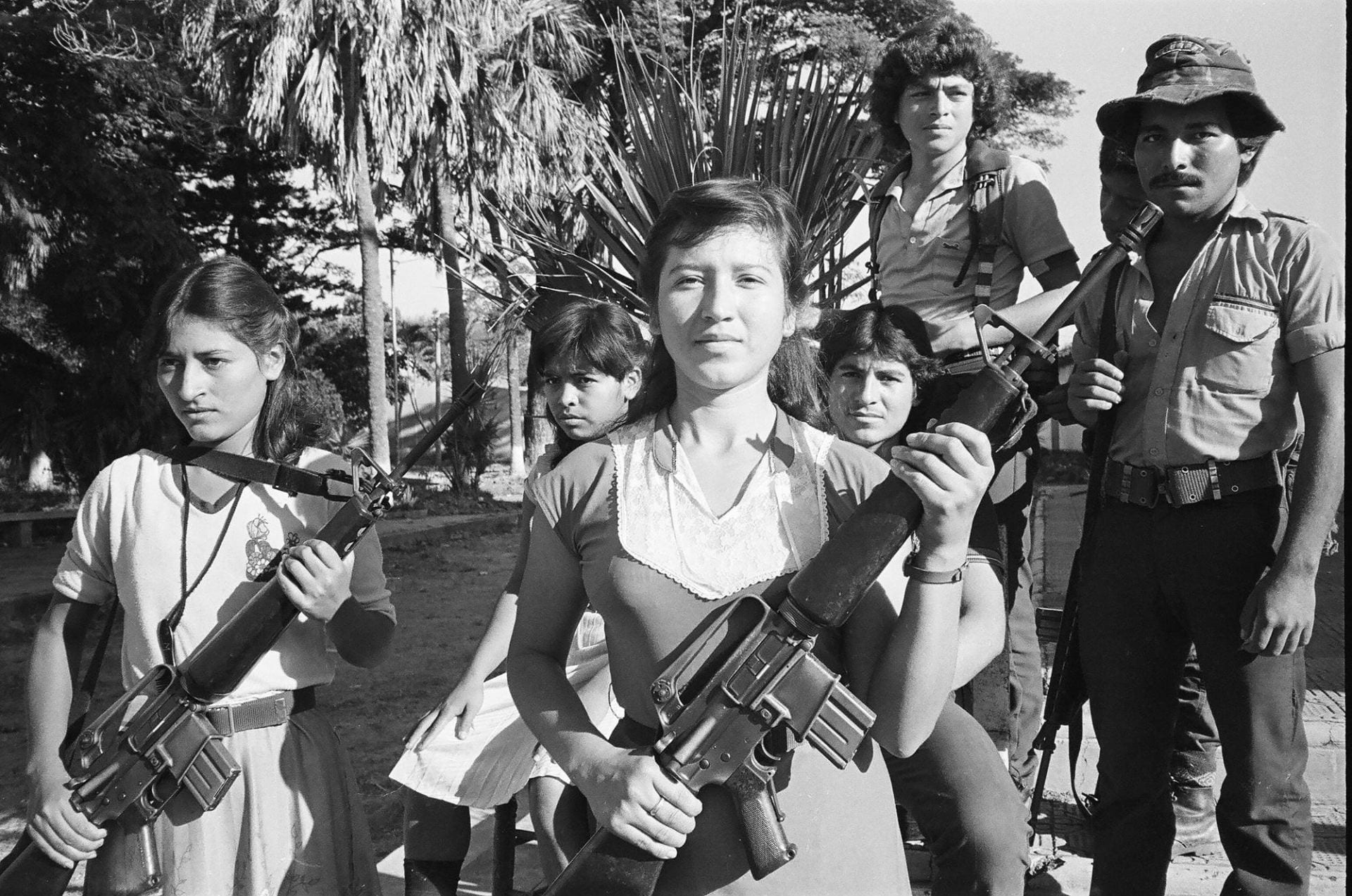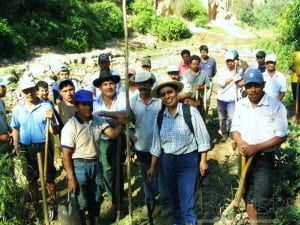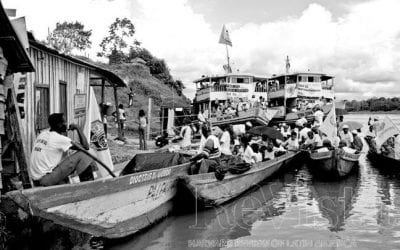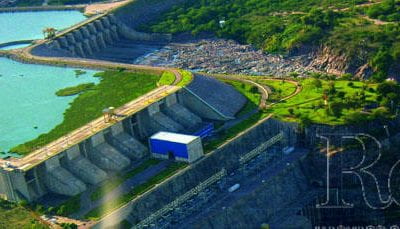Investing in Latin America’s Water Factories
Incentives and Institutions for Climate Compatible Development
Trouble had been brewing in the Bolivian village of Santa Rosa for weeks. That morning, one of Serafin Carrasco’s cows had been killed, the neighbors angry that Serafin and his four colleagues were starting a watershed forest conservation program. “We should wait a few months for the tension to disappear,” the four others had agreed. Although alone in his determination, Serafin was in no mood to give up. “No one will tell me what I can and cannot do on my land” he declared, pounding on the table. “Every year the rains fail and every year there is less water in the river. I will conserve my forest in order to protect our water and I will ask the people downstream to help me do so.”
The town of Heredia, a few minutes drive from Costa Rica’s capital San José, is a world away from rural Bolivia, but Luis Gamez from Heredia’s Public Services Company used to wrestle with the same problem as Serafin Carrasco. While cities, towns, governments and donors were happy to invest heavily in water purification, treatment, and distribution infrastructure, when it came to protecting Latin America’s “Water Factories”—the upstream forests where water actually comes from—investor interest, like a raincloud above Heredia on a sunny day, used to evaporate away into nothing. In March 2000, however, that all changed. Heredia started charging users an additional US$0.01 per cubic yard of water to protect the “watershed services” provided by the lush cloud forests that covered the slopes of the Barva Volcano. After 12 years, this independent and self-sufficient program now charges US$0.03/cubic yard and raises $300,000 annually for upstream forest conservation.
Across Latin America, the watersheds that could provide users with clean water often have to support additional and sometimes conflicting functions, such as agriculture and forestry. In many places, existing regulatory frameworks have proved unable to reconcile these conflicting needs. Fortunately, incipient learning-by-doing experiences in places like Heredia and Bolivia’s Santa Cruz valleys suggest that watershed management may be improved by providing incentive payments to upstream landowners to help them adopt land use practices that are better aligned with water provision.
One of the greatest threats to Latin America’s water supplies is extensive cattle grazing. Cows enter streambeds to drink, forage, urinate and defecate. Municipal water is contaminated, increased sedimentation blocks pipes and dams, and children miss school with diarrhea. One of earliest successes of Heredia’s municipal watershed protection scheme was to figure out how to remove the cows and the how to keep them out.
Small-scale lesson learning in places like Heredia had already led to action on much greater scale. Costa Rica’s 1996 Forest Law established a national “payments for environmental services” (PES) program with the purpose of mitigating greenhouse gas emissions and protecting watershed services, biodiversity and scenic beauty. The law established a regulatory framework for contracting with landowners and a semi-autonomous National Fund for Forest Financing. To participate in the program, landowners submit their land title and a sustainable forest management plan prepared by a licensed forester. Once this plan is approved, specified practices such as planting timber and conserving or managing forests trigger the start of payments. In 2006, for example, annual payments for conservation averaged US$140/acre, while for forest plantations US$1,795/acre was disbursed over ten years. The program is funded primarily by a national tax on fossil fuels, and has proved highly popular with landowners, with requests to participate far outstripping available financing.
The Mexican and Ecuadorian governments have since initiated similar schemes. Mexico alone has spent almost US$480 million over the past eight years on a Program for Hydrologic Environmental Services that makes conditional cash transfers to individual and collective owners of the natural forests that provide watershed functions. Payments for cloud forests (US$88/acre/ year) exceed those for other tree-covered lands (US$66/acre/year). Contracts with suppliers of environmental services are signed for five years, with conditional renewal, and cash payments are made at year’s end, provided that compliance with contractual obligations has been satisfactory during the preceding twelve months. Monitors analyze satellite imagery and carry out random field visits to detect changes from forest-cover baselines. The 2003 budget allowed for the enrollment of 277,000 acres, with the highest priority given to areas where the threat of deforestation was greatest, zones which had an elevated incidence of poverty or biodiversity, and watersheds important for downstream communities or aquifer recharge.
The logic behind all these “Payments for Environmental Services” (PES) schemes is seductively alluring. Payments provide direct and tangible economic opportunities to farmers who commit to sustainable non-destructive uses of forest or to protect the environment: for example signing agreements to keep cattle away from their water sources. Thus even small payments to farmers such as Bolivia’s Serafin Carrasco actually end up indirectly benefiting the entire country. Further, by locking up the carbon in old-growth forests, PES schemes have the potential to contribute to mitigating climate change, and by protecting water supplies, may help farmers in drought-susceptible regions adapt to climate change. PES proponents say such conditional cash transfers to the poor have the potential to be a silver bullet for both development and the environment.
However, large-scale government-led PES schemes may not actually provide all of the hoped-for environmental and development impacts. Landowners can usually choose which land parcel to enroll, and thus most likely choose the areas they were not going to deforest anyway. The schemes are standardized, so landowners across the country receive the same benefit—regardless of the quality or environmental importance of or risk to their land. Local communities are often removed from decision-making and payments are made in cash, so landowners may view the arrangements simply as a market transaction that may be overwritten as soon as another, more attractive opportunity arises. In short then, in cash-based PES schemes, even if the farmer has actually changed his behavior and is conserving land that he otherwise would have deforested, there is a high risk that this behavior change will only last as long as the payments do.
A different form of incentive-based conservation has also been developing. Started by farmers such as Serafin Carrasco in Santa Rosa and epitomized by the initiatives in Heredia and Bolivia’s Santa Cruz Valleys, these compensation schemes are locally designed, funded and implemented, and focus on local priorities. Payments are often made not in cash, but in kind, in the form of locally appropriate alternative development projects such as beekeeping.
“If I receive money, I will spend it quickly,” stated Serafin as the program started, “but honey production has helped me diversify my income. With support from downstream, I learned the importance of keeping the forest healthy and keeping the cattle away from streams.”
Farmers such as Serafin don’t conceptualize such mutual support schemes as payments for a service. Rather, the schemes are known locally as “reciprocal watershed agreements.” The downstream water users who want to maintain upstream forests directly fund the schemes, focusing on the forests that are hydrologically most important to them. Compensation can vary with levels of threat; education and social marketing can help promote and build on local social norms that favor conservation and development. Most importantly, the proximity of service users and providers can promote strong mutual dependence—if the landowner cuts his forest, it will be quickly obvious to his downstream counterparts.
Practitioners such as Costa Rica’s Luis Gamez and Maria Teresa Vargas of Fundación Natura Bolivia, have therefore hypothesized that small-scale conservation incentive schemes based on local concepts of reciprocity and benefit-and cost-sharing may actually work better than large-scale government-led PES schemes. This may be especially true in a rapidly changing global climate.
By protecting the water factories in upper watersheds that would otherwise be deforested, local schemes can sequester highly “additional” carbon dioxide, thus mitigating the effects of climate change. By conserving water supplies, the schemes can help farmers and cities adapt to the most pervasive impacts of climate change in Latin America: less rainfall and longer dry seasons.
Incentives that take the form of alternative economic activities adapted to local necessities can have a high development impact. Further, the composition of the incentive packages can help development agencies and governments nudge farmers to diversify their income sources, away from drought-susceptible annual agriculture towards less rainfall- dependent perennial agriculture.
Gamez and Vargas accept, however, that bottom-up schemes tailored to local needs can be institutionally fragile, and weak local institutions will need to be empowered if the initiatives are to be sustainable. Reciprocal Watershed Agreements require a strong alliance between local government and the water provider to implement and monitor the scheme. However, in places like San José de Lourdes, in northern Peru, the municipal government has a serious water problem, but currently lacks the capacity to manage a reciprocal watershed protection scheme. Municipal officials are trying their best, but with less than 1,200 acres under protection, the scheme has very limited potential for the large reach and economies of scale of national programs.
Kevin Green and Amielle DeWan, researchers at Rare Conservation in Arlington, Virginia, are trying to identify synergies schemes between different countries, and to assess if and how various types of PES and reciprocal watershed agreements can better help poor communities develop and simultaneously mitigate and adapt to climate change. Green and DeWan have developed a “climate compatible development index” (CCD) that quantifies in simple terms the ability of the different intervention types to increase rural incomes and enhance environmental protection.
In a fast changing world in which the demand for water is rising faster even than global population, Green thinks that climate-compatible development is the “Holy Grail” that practitioners and policymakers are hoping for—strategies that provide mitigation, adaptation and development that gets people richer, healthier, and with better access to water. “The CCD concept—as proposed by the Climate and Development Knowledge Network (www.cdkn.org)—is basically a response to the need of policy makers to foster economic growth and human development while simultaneously minimizing carbon emissions and promoting resilience to climate impact.”
This model may play a useful role in both national and small-scale incentive-based watershed conservation programs. But what works best and where?
Green and DeWan have joined with a group of researchers from across Latin America to find out. Gamez will share his experiences from Costa Rica, while Maria Teresa Vargas will evaluate what components of the reciprocal watershed protection schemes are working best in Bolivia, and other researchers will share lessons from Mexico, Ecuador and Colombia.
What is already obvious is that while national governments need to play a leading role in protecting Latin America’s Water Factories, these important forests are often already full with people or agriculture. On-the-ground watershed activities must therefore be led not from capital cities, but by small-scale landowners, municipal leaders, and visionaries such as Serafin Carrasco, convincing and cajoling the rural poor to protect their water supplies, literally one tree at a time.
Preliminary data from Bolivia suggest that it may be possible to greatly expand these small-scale schemes. In the last seven years more than 800 upstream families in 22 municipalities have joined Serafin Carrasco in conserving 60,000 acres of water-producing forests in the Santa Cruz valleys. More than 30,000 downstream families are now making additional monthly payments in their water bill to ensure that the municipal forest and water conservation schemes are economically sustainable.
Serafin still worries about the low levels of water in the Los Negros River, and how climate change is affecting agricultural yields. But he’s not alone anymore. “Maybe it’s just as well they killed my cow all those years ago. It certainly got me riled up and committed to conserve our watershed. And anyway,” he observed drily, “we don’t want cows upstream anymore. We need to protect the water factory.”
Nigel Asquith was a 2009-2010 Giorgio Ruffolo Fellow in Sustainability Science at the Harvard Kennedy School. This is an output from a project funded by the UK Department for International Development (DFID) and the Netherlands Directorate-General for International Cooperation (DGIS) for the benefit of developing countries. However, the views expressed and information contained in it are not necessarily those of or endorsed by DFID, DGIS or the entities managing the delivery of the Climate and Development Knowledge Network, which can accept no responsibility or liability for such views, completeness or accuracy of the information or for any reliance placed on them. Contact: nigelasquith@naturabolivia.org
Related Articles
Al Son Del Río
English + Español
Wending our way down the Atrato River in Colombia’s Chocó region, we finally reach the town of Puné. It is a fickle June afternoon, one of those humid tropical afternoons when the sun and water alternate in sudden torrential rains. “The river is everything to us,” …
Water: The Last Word
A man was shot and killed in a dispute in June 2010 over a water connection in San Juan Cancuc, Chiapas, Mexico. A Zapatista settlement coexists, if uneasily, on the edge of the municipality. Residents of the nearby community of El Pozo had threatened to shut off Zapatistas water connection. A confrontation ensued, shots followed, with one fatality and nine wounded. …
Water, The Energy Sector and Climate Change in Brazil
As a Brazilian, I am very proud of the rich natural resources of my country, in particular water resources. As an engineer who had worked in the Brazilian energy sector for the last fourteen years, I am very proud of the infrastructure built over the last seventy years that has allowed the use of water resources responsibly and intelligently. But as a hydrologist and doctoral student in water resources,…






